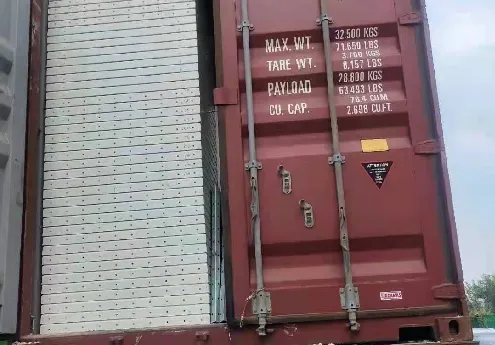loading...
- No. 9, Xingyuan South Street, Dongwaihuan Road, Zaoqiang County, Hengshui, Hebei, China
- admin@zjcomposites.com
- +86 15097380338
- Welcome to visit our website!
Exploring Innovative Solutions for Enhancing Security with Frp Guardrail Applications and Benefits
Understanding FRP Guardrails Importance and Applications
Fiber Reinforced Polymer (FRP) guardrails serve as essential safety features in various transportation infrastructures, including highways, bridges, and pedestrian walkways. As technology evolves, the need for robust, lightweight, and durable materials in safety applications has become paramount. FRP materials, with their unique properties, have emerged as a front-runner in fulfilling these needs.
The Composition and Benefits of FRP
FRP is a composite material made by combining a polymer matrix with reinforcing fibers, typically glass or carbon. This combination results in a product that is not only lightweight but also extremely strong and resistant to corrosion. Unlike traditional materials like steel or wood, FRP guardrails offer several advantages
1. Corrosion Resistance One of the most significant benefits of FRP guardrails is their resistance to environmental factors. Unlike metal, which can rust and weaken over time, FRP materials withstand exposure to moisture, chemicals, and UV radiation. This characteristic makes them ideal for use in coastal areas or regions with high humidity.
2. Lightweight The lightweight nature of FRP allows for easier handling and installation. This aspect reduces labor costs and minimizes the equipment needed for transport and installation, making it a cost-effective solution over the long term.
Understanding FRP Guardrails Importance and Applications
4. Design Flexibility FRP can be molded into various shapes and sizes, allowing for versatile design options. This adaptability means that guardrails can be customized to meet specific safety requirements and aesthetic considerations, merging functionality with visual appeal.
frp guardrail

Applications of FRP Guardrails
FRP guardrails are increasingly utilized in a variety of applications, underscoring their versatility and effectiveness. Some notable uses include
- Highway Safety On highways, FRP guardrails play a crucial role in protecting vehicles from veering off the road. Their ability to absorb impact effectively reduces the risk of serious accidents.
- Bridges and Overpasses In bridge construction, FRP guardrails offer lightweight safety barriers without compromising structural integrity. Their resistance to environmental degradation also ensures longevity in challenging conditions.
- Pedestrian Areas In urban settings, FRP guardrails are employed in pedestrian walkways and parks. Their design flexibility allows them to blend seamlessly into the environment while providing necessary safety barriers.
- Marine Applications Given their corrosion-resistant properties, FRP guardrails are perfect for marine settings, such as docks and marinas, where exposure to saltwater can rapidly deteriorate traditional materials.
Conclusion
As the demand for innovative safety solutions continues to grow, FRP guardrails stand out as a prime example of how advanced materials can enhance public safety. Their remarkable properties—lightweight, durable, and resistant to corrosion—make them suitable for a wide array of applications. By investing in FRP guardrails, infrastructure planners and policymakers can significantly improve safety measures while also addressing long-term maintenance concerns. In a world where safety is paramount, the adoption of FRP technology is a forward-thinking step towards creating safer environments for everyone.
-
GRP Structures: The Future of Lightweight, High-Performance EngineeringNewsJun.20,2025
-
FRP Water Tank: High-Performance Storage for Corrosive and Clean Water SystemsNewsJun.20,2025
-
FRP Square Tube: The New Industry Standard for Chemical and Structural ApplicationsNewsJun.20,2025
-
FRP Pultruded Profiles: The Ultimate Choice for Lightweight Structural StrengthNewsJun.20,2025
-
FRP Handrails: The Safer, Smarter, and Stronger Choice for Modern InfrastructureNewsJun.20,2025
-
FRP Grating: The Smart Solution for Durable, Lightweight Industrial FlooringNewsJun.20,2025
-
Why Choose a Galvanized Water Tank for Your Storage NeedsNewsMay.21,2025
